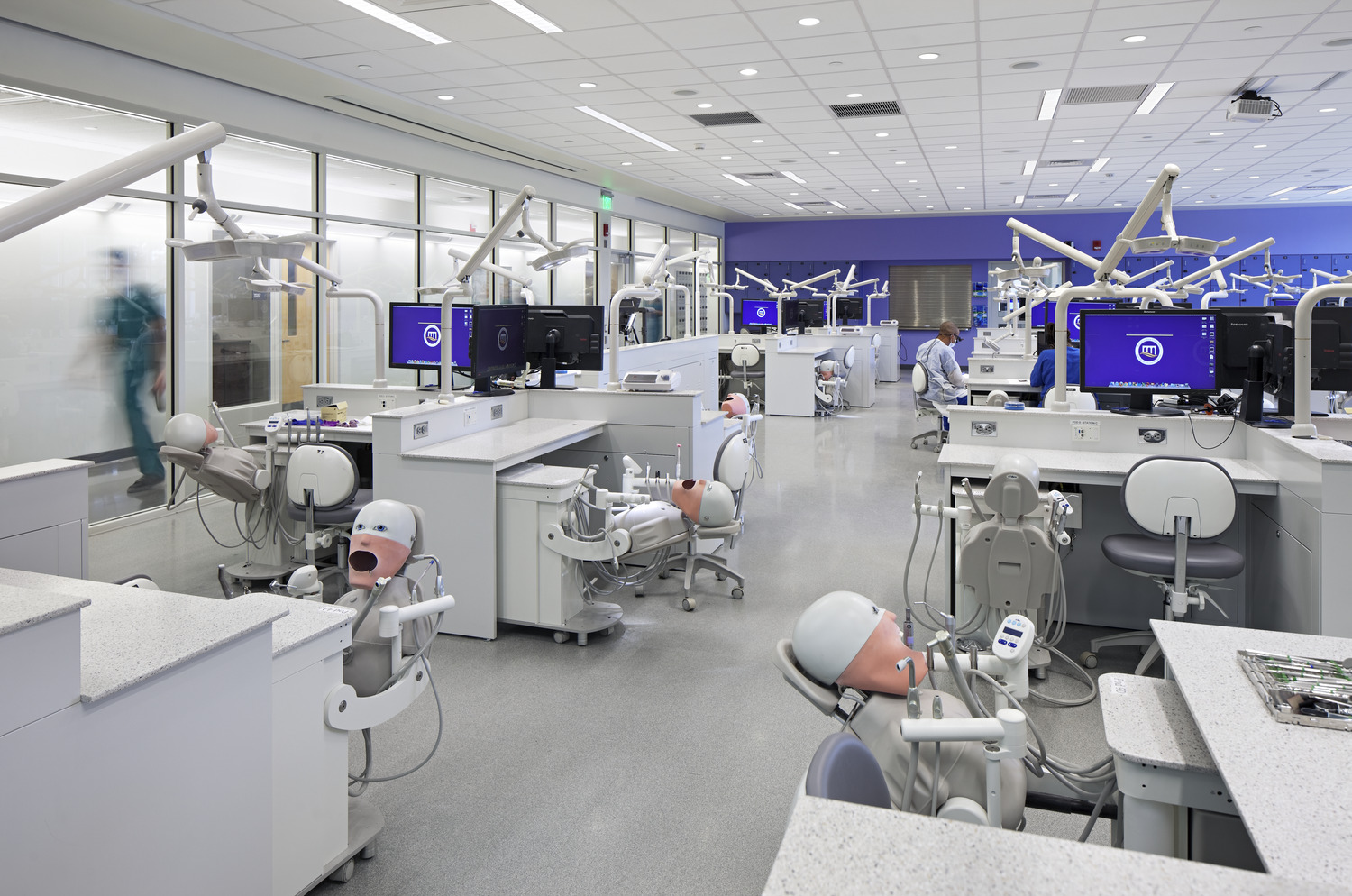
The design of dental schools is fundamental to shaping the future of dental education. As Page looks to modernize and enhance these educational environments, focusing on integrating advanced technologies, creating flexible and collaborative spaces, and planning for operational efficiency becomes essential. These elements improve students' and faculty's learning and teaching experiences and ensure dental schools remain at the forefront of academic distinction.
Page is advancing the dialogue on the future of dental education design, partnering with their client institutions to explore the best practices and design strategies to deliver environments that will support students and patients. Our approach to dental education facilities builds on the success of evidence-based design techniques pioneered in the healthcare built environment, incorporating our research and that of others. The benefit is that classrooms and collaboration spaces support instructors in providing students with the necessary skills to perform in the healthcare workforce.
Integration of Advanced Technologies in Dental School Design
Advanced technologies are revolutionizing dental education, and dental schools must incorporate these innovations into their design. The customized clinical skills lab, complete with patient simulators and electronic patient records, is at the leading edge of this transformation to provide students with hands-on experience in a controlled, realistic environment. These spaces significantly improve learning efficiency by enabling students to practice procedures and refine their skills.
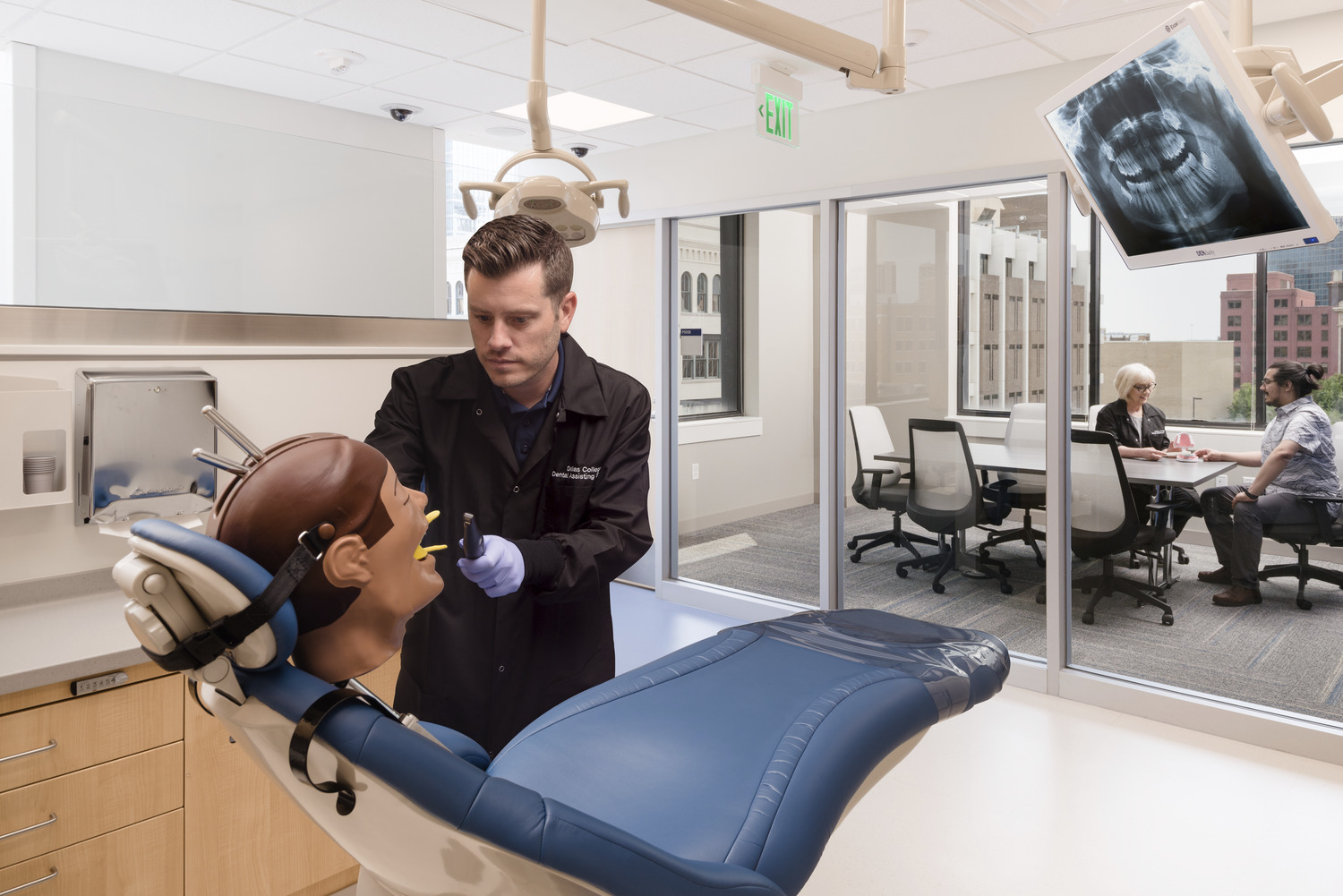
Facilitating the Transition to Practice
In addition to basic skills acquisition with patient simulators, the University of Texas Health Science Center at Houston School of Dentistry (UT Health) design includes task training simulation immediately adjacent to their state-of-the-art patient care spaces. The teaching clinic offers the full range of services students will encounter in practice, including a digital radiography center, diagnostic clinic, main waiting area, a flexible clinic for multi-specialty areas, a faculty practice clinic, and a central dispensary. These spaces are designed with flexibility, allowing for future technological advancements and scalability to add new equipment as needed. This forward-thinking approach ensures that the school’s facilities remain cutting-edge and continue to meet educational needs.
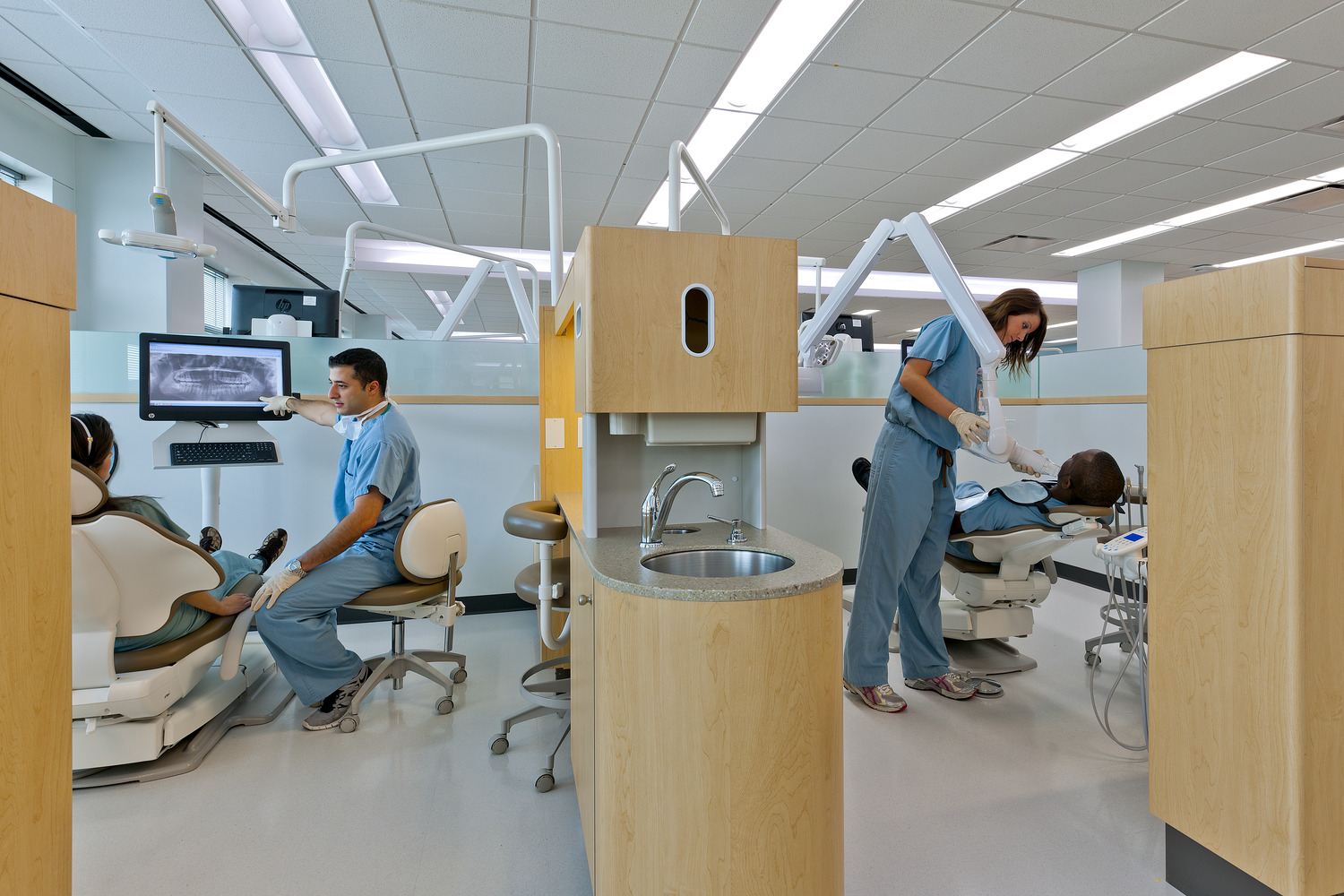
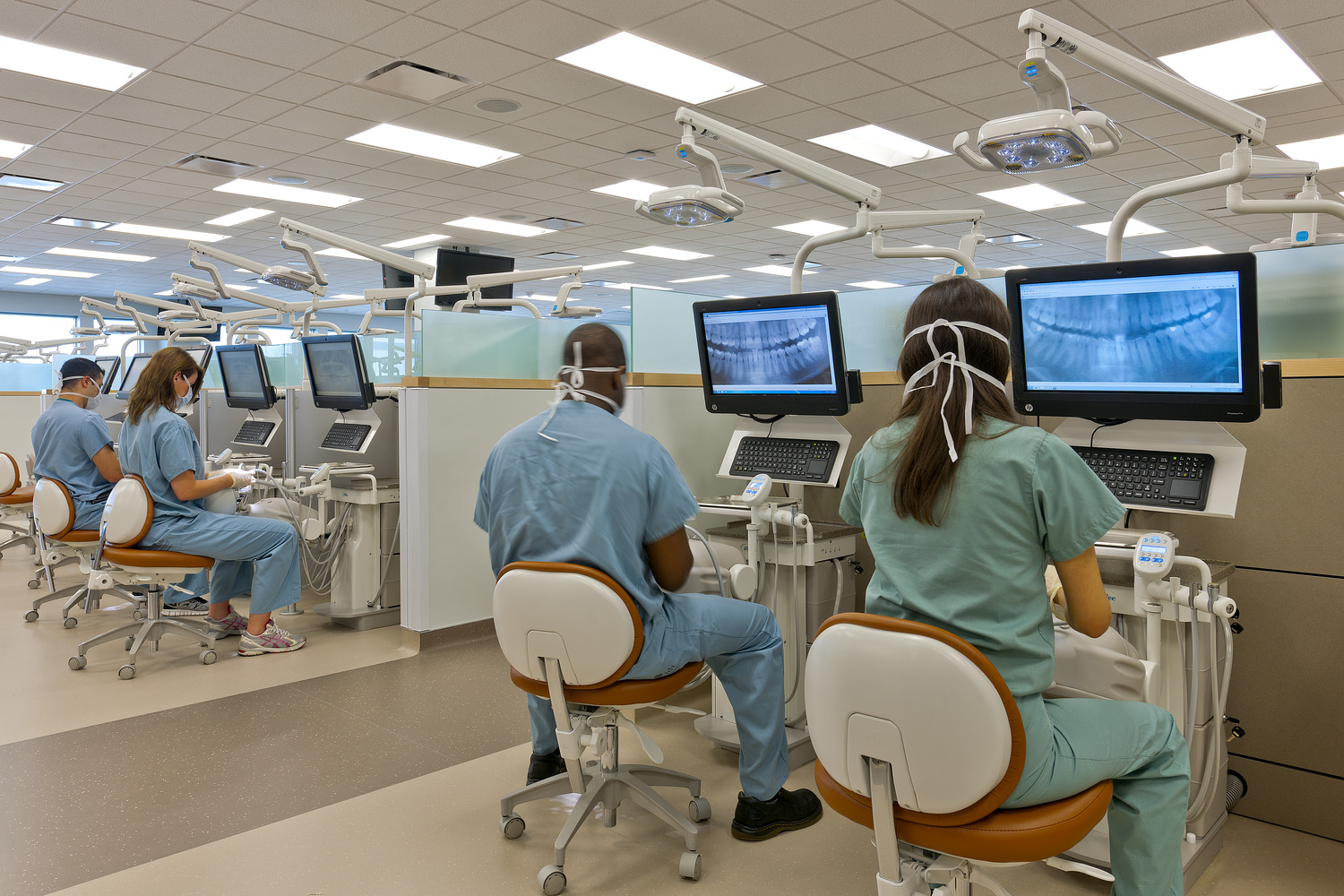
Many new dental education programs organize classes into small practice groups, where the cohorts stay together as a unit in the teaching clinic and study together for small-group problem-based learning. This is the model driving the planning for the new program to support Howard University’s dental education future space, currently in planning with Page.
At East Carolina University’s teaching clinic, incorporating distance technology into the curriculum offers students innovative methods to observe complex dental procedures and collaborate with peers at remote clinical sites. The school also features technologies to help bridge the gap between theoretical knowledge and practical application, preparing students for the technological demands of modern dental practice. As these tools become more advanced, the design of dental schools must evolve to seamlessly incorporate these innovations, providing students with the best possible training environment.
Flexible and Collaborative Learning Spaces
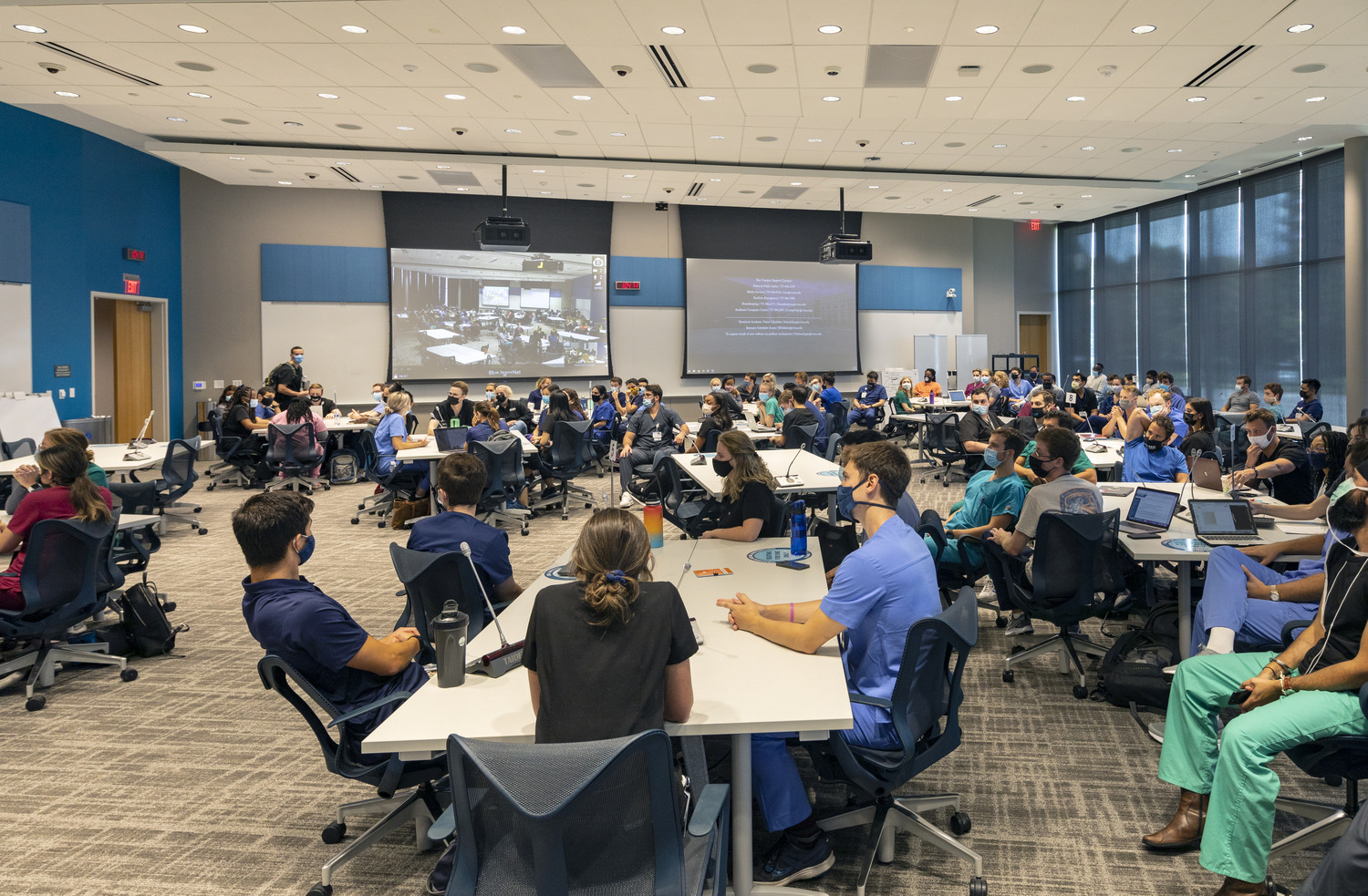
Complementing the experiential learning spaces, dental schools are also rethinking their approach to formal instruction, requiring design strategies that promote flexibility and collaboration. Traditional lecture halls are evolving into dynamic, multi-functional spaces that support various teaching methods and learning styles. These spaces are designed to be reconfigurable, allowing for easy adaptation to different uses, from small group discussions to large lectures or hands-on workshops. Health education institutions find that interprofessional education is more easily delivered in these adaptable large-scale spaces that can support synchronous and asynchronous events.
In addition to classrooms at NYU College of Nursing, Dentistry, and Bioengineering, flexible, informal learning spaces have been integrated throughout the building, providing areas where students can collaborate across health disciplines on projects, share ideas, and learn from one another. These open-plan areas with movable furniture and integrated technology enable a cohesive transition between different learning modes and foster a collaborative environment. Such spaces are not only beneficial for students but also for faculty, who can engage in more interactive and innovative teaching methods.
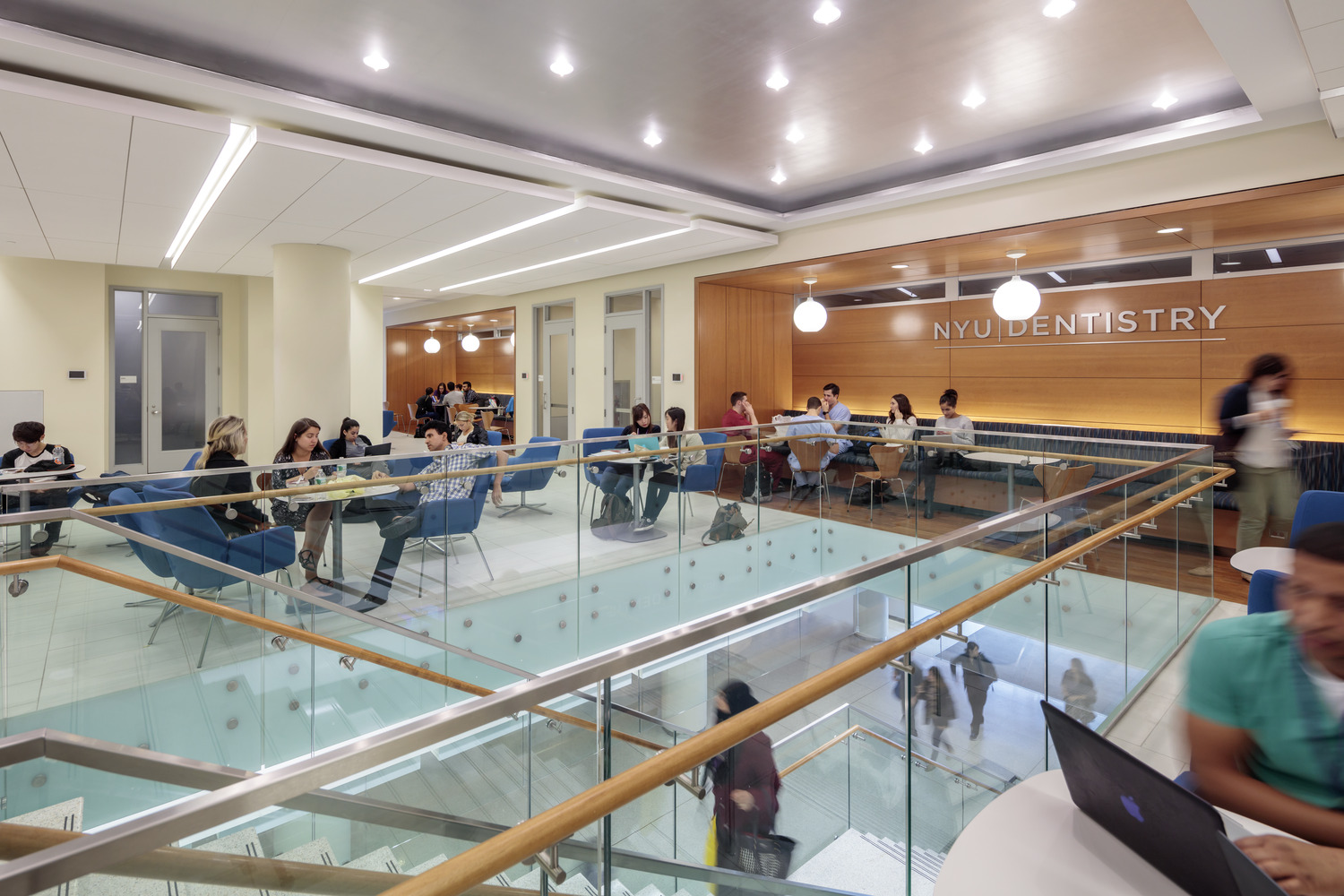
This interdisciplinary approach fosters a holistic understanding of patient care, encouraging future dentists to collaborate effectively with other healthcare professionals. Dental schools can better prepare students for the collaborative nature of modern healthcare environments by designing spaces that facilitate these interactions.
Operational Efficiency
Operational efficiency in dental school design optimizes educational and clinical functions. Dental schools must balance patient and student needs, ensuring high-quality care and a robust learning environment. One effective strategy is separating “on-stage” and “off-stage” spaces, as seen at UT Health School of Dentistry. This approach effectively balances supportive patient space, efficient clinical support, and a vibrant, interactive (and sometimes noisy) student environment.
Another aspect of operational efficiency is the strategic placement of educational and clinical spaces to streamline workflow and reduce unnecessary movement. UT Health's classrooms, labs, and clinics are located near each other, minimizing transit time and maximizing students’ learning and clinical activities. This thoughtful layout boosts productivity and enhances the overall educational experience for students and faculty.
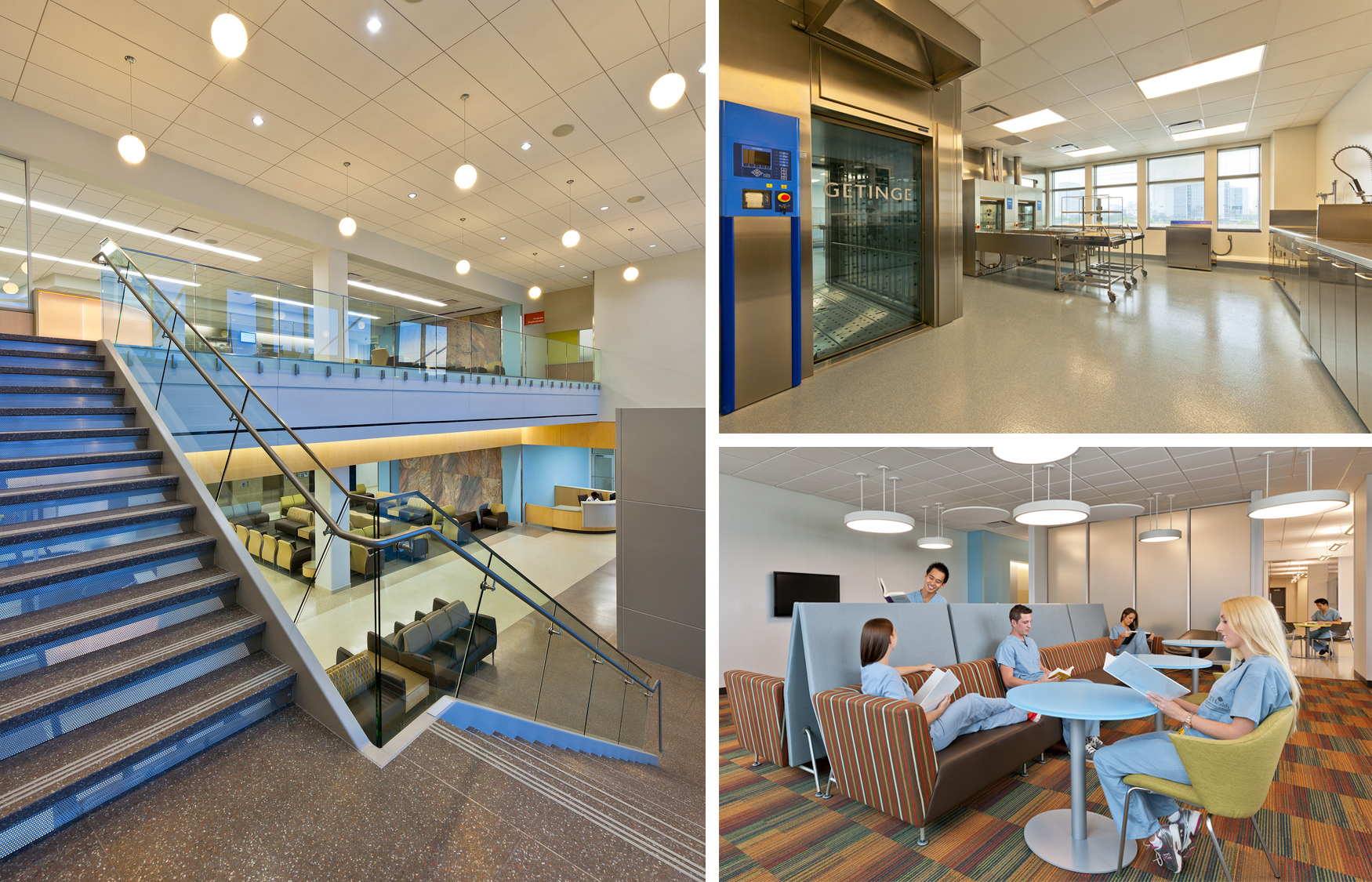
Implications for Future Dental Education Spaces
Faculty and student post-occupancy surveys were conducted at East Carolina University and the UT Health facilities to look for common themes that could inform future facility design. The study revealed the following key takeaways:
- Quality of lighting and access to natural light are strong drivers for satisfaction among both faculty and students.
- Adequate size and consistency in dental training operatories are essential for student satisfaction.
- Operational models must balance efficiency with opportunities for students to socialize with peers and professors.
Incorporating advanced technologies, fostering flexibility and collaboration, and ensuring operational efficiency are critical principles in designing the dental schools of the future. These elements improve the educational experience for students and faculty and position dental schools at the forefront of experiential learning in education. By looking at successful implementations, such as those at UT Health School of Dentistry, we can see how insightful design can create dynamic and adaptable spaces that meet the evolving needs of dental education. The design of dental schools is not just about meeting current standards but about anticipating future needs. Through design-led meticulous planning, Page creates dental schools that truly prepare students for the future of dentistry, ensuring they are well-equipped to provide the highest level of care in an ever-changing healthcare landscape.
About the Authors
John Smith, Managing Director, Principal, Los Angeles
John was the lead designer of the UT Health Houston School of Dentistry. He is passionate about using design to inspire and connect people. As a Design Principal at Page, he collaborates with clients, engineers, and builders to create projects that reflect the unique qualities of their climate, culture, and context. John holds a Bachelor of Science in Architecture from the University of Houston and is a licensed architect with accreditations from the American Institute of Architects, LEED, and WELL AP.
Jennifer Amster, Director of Academic Planning, Principal, Raleigh
Jennifer led the ECU School of Dental Medicine and Community Service Learning Centers projects, Rutgers School of Dental Medicine Oral Health Pavilion Addition, and Howard University College of Dentistry Replacement. She is driven by buildings' impact on their occupants and specializes in academic health planning, focusing on healthcare and higher education projects. Jennifer holds a Master of Architecture from North Carolina State University and a Bachelor of Science in Architecture from the University of Virginia. She is a licensed architect accredited by the American Institute of Architects and LEED.

